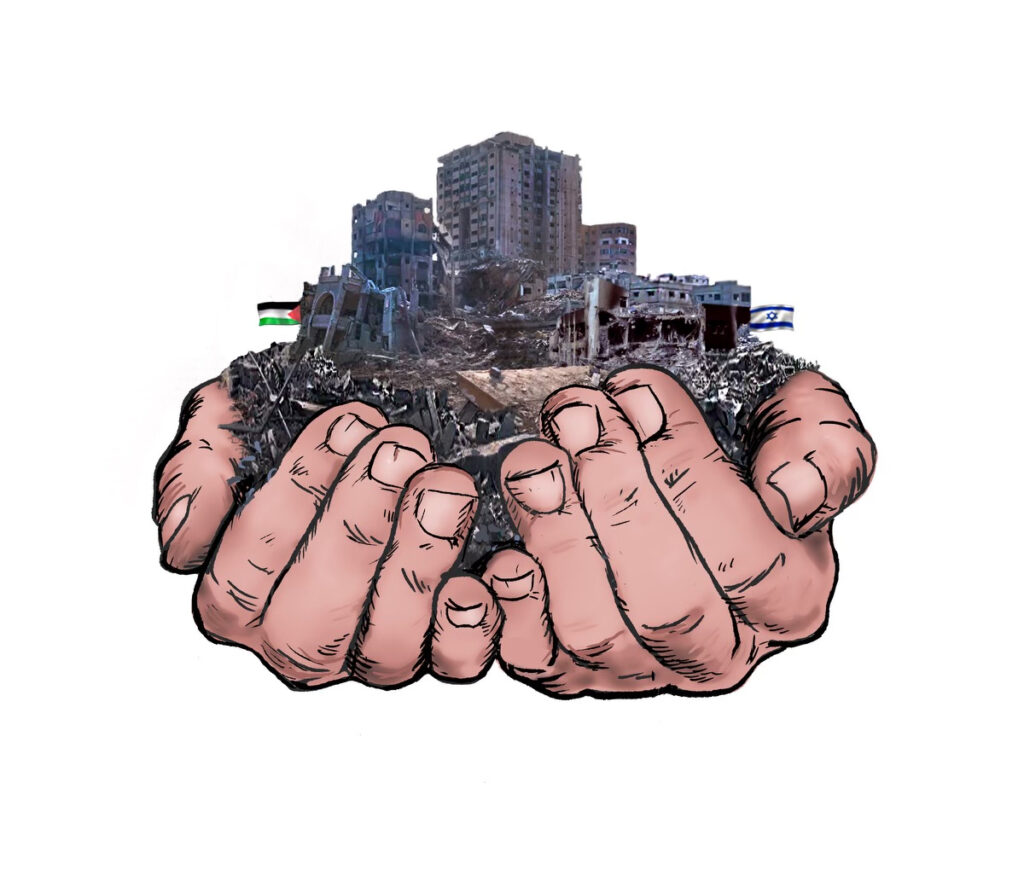There’s no playbook for times like these.
The horrors playing out in Israel and Gaza since October 7th have resonated across the world, with young people at the center of this conflict.
About half of the Palestinian population facing bombardment in Gaza is under 18, while some of the most lasting images of the war have been the Israeli children murdered and taken hostage by Hamas.
Meanwhile, the conflict has activated young Americans on both sides of the issue. They are forming their own opinions, joining protests and sharing their thoughts on social media. Gen Z has inherited a slew of problems from older generations, from climate change to income inequality to political polarization. Tragically, the Israel-Palestine conflict is now another challenge on the list.

But as we’ve learned from Gen Z’s track record, they’re the last to shy away from a sensitive topic; in many ways, they’re leading the way with their responses. Take, for example, the event organized by New Jersey high school students 15-year-old Liora Pelavin, who is Jewish, and 17-year-old Rawda Elbatrawish, who is Muslim, at their local community center for young people to come together and learn more, express their thoughts and feelings, and have a peaceful discussion. The NYT Student Opinion forum on the war is teeming with over 600 comments from students as young as 13 weighing in. Hyper-aware of potential bias in mainstream news, many young people are turning to TikTok and other social media to get differing viewpoints and watch firsthand accounts–the hashtag #Palestine has amassed over 27.8 billion views, and #Israel 23 billion.
As usual, Gen Z defies easy definitions. Young people were front and center at the Nov. 14 March for Israel in Washington, where tens of thousands of demonstrators gathered in support of Israel and against antisemitism. At the same time, some 70 percent of voters aged 18 to 34 disapprove of the way President Biden has handled the war, according to a recent NBC News poll. Droves gathered near the White House to march for a ceasefire.
After a pause in the fighting, the war in Gaza has resumed. All signs point to a long haul ahead.
At schools across the country, there have been a wide range of responses from state education departments, schools, and teachers with regards to how — and if — to address the conflict in the classroom. Many teachers have tried to avoid the topic entirely–out of concern that they’re not informed enough on the conflict and its history to do it justice, or that the conversation may be too upsetting for students, or that they’d be putting their jobs at risk. Their worries are understandable: For example, some education leaders have even issued warnings to teachers, stating that all personal or political views must be left out of the classroom. At many such schools, students are taking the initiative to organize after-school discussion groups themselves.
Other teachers are facing the topic head-on. Responses have ranged from informal check-ins and class discussions, to more structured “teach-ins” and organized lessons, with teachers taking special care to ensure their students feel safe during these instances. We’re particularly inspired by the story of Sari Beth Rosenberg, a high school history teacher in New York City. In class one day, a student interrupted her lecture to ask, “Are you Team Israel or Team Palestinian?”
Rosenberg told the class that she is “Team Humanity,” and so are we.
We decided not to commission new writing on the conflict for this issue. Instead, we went into listening mode: We’ve read countless works of student journalism from high school newspapers nationwide on this conflict – from exploratory and analytical articles to impassioned commentary. The scope, sophistication and creativity of the work is profoundly inspiring – not just nationwide, but even within a single school. So we chose to syndicate a collection of five pieces on the war from Stuyvesant High School in New York City. The diversity of opinions from just one student body reflects the different and dynamic ways America’s rising generation is grappling with this decades-long dispute.
Elsewhere in the issue, we profile a student reporter who shook the worlds of higher education and journalism itself, indigenous teens in Mexico rewriting the climate playbook, and Hawaiian students rebuilding their schools and communities after the Maui wildfires. Plus, more than 20 syndicated pieces from high school newspapers across the country diving into issues of mental health, affirmative action and so much more.
Our mission is to create a place where young people can read and write about the hardest civic questions facing their generation. Let’s hear what they have to say.



